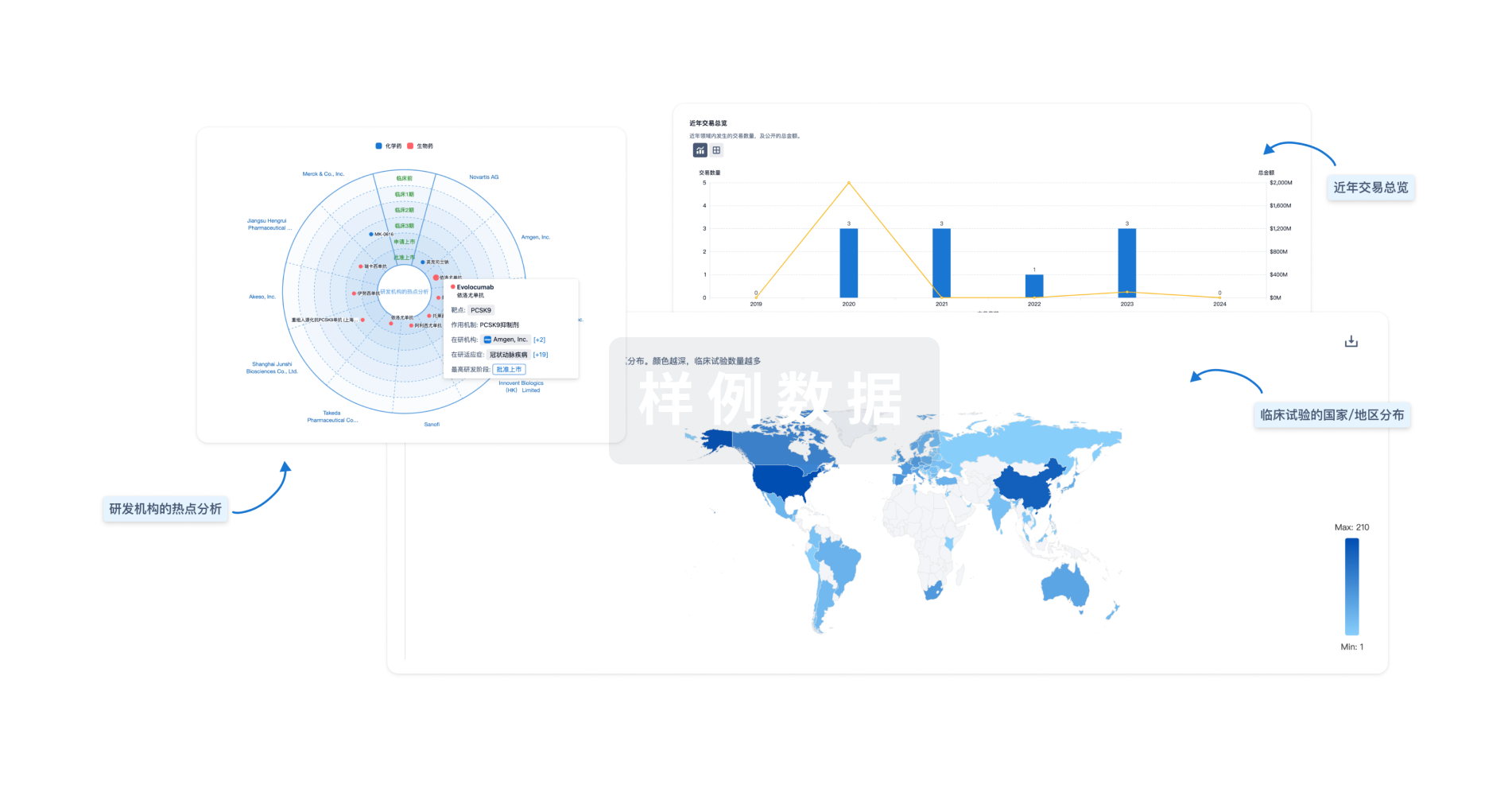预约演示
更新于:2025-05-07
DUSP2
更新于:2025-05-07
基本信息
别名 dual specificity phosphatase 2、Dual specificity protein phosphatase 2、Dual specificity protein phosphatase PAC-1 + [3] |
简介 Dephosphorylates both phosphorylated Thr and Tyr residues in MAPK1, and dephosphorylation of phosphotyrosine is slightly faster than that of phosphothreonine (PubMed:8107850). Can dephosphorylate MAPK1 (By similarity). |
关联
100 项与 DUSP2 相关的临床结果
登录后查看更多信息
100 项与 DUSP2 相关的转化医学
登录后查看更多信息
0 项与 DUSP2 相关的专利(医药)
登录后查看更多信息
173
项与 DUSP2 相关的文献(医药)2025-09-01·Comparative Biochemistry and Physiology Part D: Genomics and Proteomics
Transcriptome analysis of the spermatogonial stem cell line of Opsariichthys bidens after infection with three strains of ranaviruses
Article
作者: Ren, Jianfeng ; Ke, Fei ; Liu, Dong ; Jiang, Qiqi ; Liu, Zhongyi ; Gui, Lang ; Zhang, Shiwen ; Cheng, Linwen ; Li, Mingyou
2025-04-01·Translational Oncology
Discovering the Potential Role of the C2 DUSP2+ MCs Subgroup in Lung Adenocarcinoma
Article
作者: Sun, Renfang ; Chen, Ailing ; Zhang, Shengyi ; Liu, Chao ; Xiahou, Zhikai ; Yuan, Jie ; Li, Xinhan
2025-04-01·Journal of Biological Chemistry
PKM splice-switching ASOs induce upregulation of dual-specificity phosphatases and dephosphorylation of ERK1/2 in hepatocellular carcinoma
Article
作者: Voss, Dillon M ; Mishra, Lopa ; Vakoc, Christopher R ; Caruthers, Marvin H ; Utama, Raditya ; Sim, GeunYoung ; Cunniff, Patrick J ; Krainer, Adrian R ; Cizmeciyan, Chris ; Lin, Kuan-Ting ; Schafer, Balazs ; Kral, Alexander J
2
项与 DUSP2 相关的新闻(医药)2024-09-19
·今日头条
【导读】
放疗是前列腺癌(PCa)的治疗手段,但放疗耐药严重影响其疗效。失调的RNA剪接因子广泛参与肿瘤进展。尽管如此,剪接因子在前列腺癌放射耐药中的作用在很大程度上仍未被探索。
9月17日,中山大学研究团队在期刊《Advanced Science》上发表了研究论文,题为“PTBP1 Regulates DNMT3B Alternative Splicing by Interacting With RALY to Enhance the Radioresistance of Prostate Cancer”,本研究在多个公开的前列腺癌数据库中,识别出23个在前列腺癌和相邻正常组织之间表达差异显著的剪接因子。在这些基因中,PTBP1在前列腺癌中显著上调,与高级别临床病理特征和不良预后呈正相关。功能获得和丧失实验表明,PTBP1显著增强了基因组DNA的稳定性,从而使前列腺癌细胞在体外和体内对辐射产生耐药。机制上,PTBP1与RALY相关的异染色质核糖核蛋白(hnRNP)相互作用,并调节DNA甲基转移酶3b(DNMT3B)第5外显子的剪接,从DNMT3B-S剪接到DNMT3B-L。此外,DNMT3B-L的上调导致DUSP2的启动子甲基化,进而抑制DUSP2的表达,从而增强前列腺癌的辐射耐药性。这些发现强调了剪接因子在响应放疗时诱导异常剪接事件中的作用,并指出了PTBP1和DNMT3B-L在逆转前列腺癌辐射耐药性方面的潜在作用。
https://onlinelibrary.wiley.com/doi/full/10.1002/advs.202405997
背景知识
01
电离辐射通过引起基因组DNA损伤有效地消除肿瘤细胞。因此,放疗已成为治疗各种癌症,特别是前列腺癌(PCa)的广泛使用的致突变细胞杀伤治疗方法,前列腺癌是男性第二大肿瘤相关死亡原因。值得注意的是,放疗是局限性PCa的治愈性治疗,也已获准作为手术后的辅助治疗、生物化学复发后的补救治疗,甚至在存在远处转移的情况下作为姑息治疗。不幸的是,尽管放疗在治疗PCa方面取得了成功,但由于辐射耐药的出现,仍有近30-50%的患者在原发或转移部位长期复发或短期内病情恶化。因此,迫切需要阐明辐射耐药的分子机制。
选择性剪接(AS)是真核细胞中一种受到严格调控的转录后细胞过程,它增加了真核生物的蛋白质多样性。统计数据显示,人类超过95%的基因会发生AS,癌症中的AS事件比正常组织多达30%,这有助于产生参与肿瘤发生的多种基因变异。一般来说,AS的调控主要依赖于跨膜剪接因子,它们能够特异性地识别和结合内在的CIS元件。在多种人类恶性肿瘤中异常表达这些剪接因子会导致剪接重编程,从而促进肿瘤进展和包括放射耐受在内的治疗耐药。因此,有针对性地靶向异常剪接因子可能会开辟癌症治疗的新途径。然而,目前尚不清楚异常剪接和相应的剪接因子是否参与了前列腺癌的辐射耐药。
PTBP1增强PCa细胞体外增殖和放疗耐受性
02
为了确定PTBP1在PCa细胞中的功能作用,研究人员通过PTBP1-靶向siRNAs或慢病毒转染建立DU145和PC-3细胞的PTBP1敲低(KD)或过表达(OE)模型。CCK-8实验结果表明,PTBP1敲低显著抑制PCa细胞的细胞活力,而PTBP1过表达则表现出相反的效果。此外,克隆形成实验进一步强化了PTBP1的促增殖作用。同时,实验结果还表明,PTBP1在调控细胞群体处于S期方面发挥着重要作用。这些结果表明,PTBP1可能有助于细胞周期中DNA复制阶段的正常进展。
据报道,PTBP1参与DNA损伤修复,这是放射治疗耐药的主要原因之一。为了研究PTBP1在辐射响应中的潜在作用,研究人员将PTBP1敲除或过表达的PCa细胞暴露于不同剂量的辐射。克隆形成试验表明,PTBP1敲除显著降低了PCa细胞在辐射后的克隆形成,而PTBP1过表达增加了PCa细胞对辐射治疗的耐药。此外,当暴露于4 Gy的辐射时,PTBP1敲除显著增加了PCa细胞的凋亡比例,而PTBP1过表达PCa细胞在4 Gy辐射后的生存潜力大于对照组细胞。为了进一步研究PTBP1是否影响辐射诱导的基因组不稳定性,研究人员对PTBP1敲除或过表达的PCa细胞在辐射后0、1、24小时的DNA损伤情况进行了彗星试验。与对照PCa细胞相比,PTBP1-KD PCa细胞在24小时后呈现出更长的彗星尾,而PTBP1-OE PCa细胞在24小时后呈现出较短的彗星尾。同时,蛋白质免疫印迹实验分析显示,在4 Gy IR治疗后不同时间点,PTBP1敲除的PCa细胞中γ-H2AX蛋白水平升高,而PTBP1过表达的PCa细胞中该蛋白水平降低,与各自的对照PCa细胞相比。这些结果表明,PTBP1在促进PCa细胞增殖和放疗耐药方面发挥着重要作用。
PTBP1通过维持遗传稳定性来促进前列腺癌细胞对放疗的耐药
为了进一步阐明DNMT3B-L如何调控DUSP2,研究人员首先基于TCGA数据评估了DUSP2启动子和5'-上游区域的CpG甲基化状态。此外,体外实验表明,5-aza-2'-脱氧胞苷(5-Aza)是一种DNA甲基化抑制剂,可剂量依赖性地显著增加DUSP2的mRNA和蛋白质水平,进一步证实DUSP2表达可通过DNA甲基化进行调控。研究人员通过在线软件设计了一对覆盖三个CpG位点的甲基化和非甲基化引物。MSP实验结果却表明,DNMT3B-L KD显著减少了使用甲基化引物时产生的PCR产物数量,但相反地增加了使用非甲基化引物时产生的PCR产物数量。为了调查DUSP2是否对PTBP1和DNMT3B-L介导的辐射耐药产生不可忽视的影响,研究人员进行了挽救实验。结果显示,DUSP2 siRNAs显著恢复了PTBP1或DNMT3B-L KD细胞的辐射耐药。同时,DUSP2 KD显著减少了PTBP1或DNMT3B-L KD细胞中由IR引起的DNA损伤。总之,这些数据表明,PTBP1通过DNMT3B-L介导的DUSP2启动子甲基化促进PCa的辐射耐药。
研究小结
03
总之,研究人员通过系统性分析PCa中的剪接因子,识别出PTBP1为一种致癌蛋白。在RALY的帮助下,PTBP1能够与DNMT3B的前mRNA结合,驱动DNMT3B的致癌剪接切换,产生DNMT3B-L,进而诱导DUSP2的启动子甲基化,从而增强癌细胞对放疗的耐药性。
本研究为异常剪接因子调节PCa的放疗耐药机制提供了新的见解,并发现PTBP1是前列腺癌放疗增敏的潜在治疗靶点。
【参考资料】
https://onlinelibrary.wiley.com/doi/full/10.1002/advs.202405997
【关于投稿】
转化医学网(360zhyx.com)是转化医学核心门户,旨在推动基础研究、临床诊疗和产业的发展,核心内容涵盖组学、检验、免疫、肿瘤、心血管、糖尿病等。如您有最新的研究内容发表,欢迎联系我们进行免费报道(公众号菜单栏-在线客服联系),我们的理念:内容创造价值,转化铸就未来!
转化医学网(360zhyx.com)发布的文章旨在介绍前沿医学研究进展,不能作为治疗方案使用;如需获得健康指导,请至正规医院就诊。
热门推荐活动 点击免费报名
🕓 北京|09月20日-21日
▶ 第五届单细胞技术应用研讨会暨空间组学前沿研讨会
🕓 上海|11月15日-16日
▶ 2024第一届中国类器官转化医学大会
点击对应文字 查看详情
放射疗法
2022-09-19
30年前,JAK-STAT通路被人们发现,之后在转化与应用方面被持续关注。在细胞因子刺激下,这条通路调控着体内多种生物学活动、介导了几乎所有的免疫反应,不仅是免疫防御,还包括促进肿瘤细胞存活、免疫逃逸以及持续性炎症(特应性皮炎)的过程。JAK-STAT简介非受体酪氨酸激酶(JAK),包括JAK1/2/3和Tyk2。信号转导及激活转录因子(STAT),包括STAT1/2/3/4/5a/5b/6。细胞因子是JAK-STAT的主要激活信号,通过与膜上受体结合,使JAKs激活并介导STAT磷酸化入核,以调控靶基因的转录。细胞因子信号 → 激活JAK → STAT磷酸化后入核 → 调控转录Signal Transduct Target Ther. 2021 Nov 26;6(1):402. JAK-STAT与肿瘤免疫在不同的刺激信号下,JAK-STAT通路能够介导产生不同的效应,根据TME中的多种信号,发挥出抗肿瘤和促肿瘤双重作用。1. 抗肿瘤功能在多种细胞中,STAT-JAK都会响应抗瘤信号。在NK细胞中IFN-α/β信号: 通过STAT1、STAT2介导NK细胞免疫应答。IL-2、IL-15信号: 通过STAT5信号维持NK细胞稳态、增殖、功能。IL-12信号: 通过STAT1、STAT3、STAT4使NK细胞产生INF-γ、穿孔素、颗粒酶介导细胞毒性。在T细胞中IFNα/β信号: 通过STAT4促进抗原相关CD8T细胞扩增和细胞毒性作用。IL-12和IFN-γ信号: 通过STAT1、STAT4诱导T-BET产生,能够促进T细胞进一步分泌IFN-γ。并且还能促进T细胞向Th1细胞分化,阻止向Th2、Th17、Treg等免疫抑制性亚群分化。细胞死亡后通过触发JAK-STAT信号以刺激IRG的TLR感测,能够与TCR协同增强T细胞分泌细胞因子。在肿瘤细胞中IFN-γ作用于与肿瘤细胞,通过STAT1激活caspase-1/3/8和FAS,从而诱导肿瘤细胞凋亡。2. 促肿瘤功能响应促瘤信号的主要为STAT3和STAT5。STAT3是响应促瘤信号的主要转录因子。生长因子、多种细胞因子、集落刺激因子IL-6是STAT3最主要的激活信号: 通过介导IL-6-gp130与IL-6-IL-60这两个复合体形成,进而驱动肿瘤细胞以JAK-STAT依赖性的跨内皮迁移。IL-10能够通过STAT3抑制APC细胞阻断T细胞功能,促进Treg细胞分化。IL-6、IL-10导致STAT3表达升高,而升高的STAT3能够通过正反馈环路进一步促进IL-6、IL-10分泌,最终导致利于肿瘤生长环境的形成。此外,在STAT3信号激活后还能够抑制STAT1、IRF7、IRF9基因的表达,从而抑制Ⅰ型IFN信号,最终也促进免疫抑制性TME形成。STAT5在乳腺癌和前列腺癌中,STAT5与Foxp3结合,能够维持其过表达的同时促进Treg细胞发育。IL-8通过激活过表达的STAT5与乳腺癌细胞存活、化疗耐药以及转移有关。与STAT3一样,过度激活的STAT5也能够抑制IFNα信号对STAT1的激活,影响下游反应。3. 负性调节信号在JAK-STAT通路中,为了维持正确的信号传递,各层面存在多种稳态调控机制,包括负调控信号。负调控因子同样具有促瘤与抗瘤双重作用。SOCS1是维持T细胞稳态的细胞因子信号转导抑制物。它能够结合并促进JAK与STAT分解,在STAT激活时SOCS的快速诱导是决定JAK-STAT信号强度的关键。其表达缺失与肿瘤细胞PD-L1高表达有关。PIAS是细胞因子激活的STAT蛋白抑制物,能够物理阻断核内激活的STAT与DNA结合,从而阻止信号诱导。PIAS1能够抑制Ⅰ/Ⅱ型IFN→STAT1信号传递,在多种恶心肿瘤中表达升高。PIAS3被沉默时,会导致STAT3过度激活。PTP蛋白质酪氨酸磷酸酶,包括SHP1/2、DUSP2、CD45。能够去磷酸化JAK, STAT上的酪氨酸残基,以促进它们快速地重新激活。SHP1通过抑制STAT3和NFκB信号在肝癌中发挥抗瘤作用。SHP2抑制剂与PD-1抑制剂联用能够发挥短暂的抗瘤反应。小结JAK-STAT通路看似是一个简单的线性过程,但在信号传递过程中通路上的所有成员都会参与调控。通路中复杂调控机制的存在,使STAT及辅助分子表达、结构、功能方面的微小改动就可以对免疫信号和肿瘤进展产生深远的影响。推荐阅读IL-6:肿瘤炎症、癌症转移核心分子参考资料Hu X et al. The JAK/STAT signaling pathway: from bench to clinic. Signal Transduct Target Ther. 2021 Nov 26;6(1):402. Yu H et al. Revisiting STAT3 signalling in cancer: new and unexpected biological functions. Nat Rev Cancer. 2014 Nov;14(11):736-46. Thomas SJ et al. The role of JAK/STAT signalling in the pathogenesis, prognosis and treatment of solid tumours. Br J Cancer. 2015 Jul 28;113(3):365-71.Kiu H et al. Biology and significance of the JAK/STAT signalling pathways. Growth Factors. 2012 Apr;30(2):88-106.Niu GJ et al. Protein Inhibitor of Activated STAT (PIAS) Negatively Regulates the JAK/STAT Pathway by Inhibiting STAT Phosphorylation and Translocation. Front Immunol. 2018 Oct 26;9:2392.Zhao M et al. SHP2 inhibition triggers anti-tumor immunity and synergizes with PD-1 blockade. Acta Pharm Sin B. 2019 Mar;9(2):304-315.
分析
对领域进行一次全面的分析。
登录
或

Eureka LS:
全新生物医药AI Agent 覆盖科研全链路,让突破性发现快人一步
立即开始免费试用!
智慧芽新药情报库是智慧芽专为生命科学人士构建的基于AI的创新药情报平台,助您全方位提升您的研发与决策效率。
立即开始数据试用!
智慧芽新药库数据也通过智慧芽数据服务平台,以API或者数据包形式对外开放,助您更加充分利用智慧芽新药情报信息。
生物序列数据库
生物药研发创新
免费使用
化学结构数据库
小分子化药研发创新
免费使用